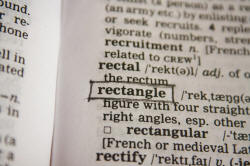Understanding reading: the essentials

The best way to improve your knowledge of a foreign language is
to go and live among its speakers. The next best way is to read
extensively in it.
Nuttall (1996:128)
If this is true, then one of the greatest benefits we can give our students is the confidence and willingness to read extensively in English. There are more reasons for this.
 |
What the research shows |
- Frequent readers have better vocabulary
- Frequent readers use grammar more accurately
- Frequent readers have positive feeling about the language
- Frequent readers show higher motivation
- Frequent readers have better listening, speaking and writing skills
It can, of course, be argued that the causation may work both ways. Frequent readers may read frequently because they have better vocabularies and find it easier, are more motivated in any case and so on.
 |
Reading: the mechanics |
For many of us, reading seems such a commonplace skill that we
overlook how complex and difficult it is to learn. A much-cited
figure is that it takes around 600 hours of instruction to learn to read
with any fluency and some people never truly master the art even in
their first language. We should not, therefore, treat the area
lightly or assume that our learners will simply transfer the skill from
first to subsequent languages.
Being able quickly to read a text and grasp the meaning and
organisation requires a reading speed of around 200 words per minute and
a native speaker of English will usually achieve something around 300
words per minute (Nuttall, 1982: 36). Speeds below 200 words per
minute will usually result in non-comprehension because each word is
being processed too slowly for the overall meaning to be gathered.
For speakers of languages which do not have an alphabetic writing system
or use a different alphabet, attaining those sorts of speeds is a
challenge.
This is especially true for people whose first languages use logographic
or syllabic writing systems and even those which have an alphabetic
(i.e., more or less phonemic) system may use a range of alphabets as
well as writing right to left or top to bottom.
For more, see the guide to
spelling in English.
To get a flavour of what it is like to de-code an unfamiliar text, try
this:
![]()
and that is in English. It's even more difficult in a language you
are just beginning to master.
 |
Eye movements and word recognition |
When we read, we do not move our eyes smoothly along a line of text but focus roughly speaking about one third of the way along each word for a matter of about 200 milliseconds. We do this because, so the theory goes, it allows us to focus both on the shape of a word and on its initial two letters which carry so much of the information. We can view 3 or 4 characters to the left of our main focus and around 6 spaces to the right. This allows us simultaneously to decode the current word and begin processing the next word. If the next word is short enough, we can jump over it completely and focus on what follows. Then, in something like 30 milliseconds, our eyes jump to the next word. Thus, we work our way along the text in very small and very rapid jumps. The technical term for this fast movement between fixation points is, incidentally, saccade.
As we fixate on each word, we need, of course, to recognise it very
quickly. Native speakers can do this almost instantly with very
well known words but are slower when it comes to unusual items. We
also tend, quite often, to backtrack and re-read function words which
allow us to get the connections between phrases. So, for example,
in reading a sentence such as:
Give me a lift and I'll buy you a pint
we may return to re-read the coordinator and to figure out that
it is, in fact, acting as a conditional subordinator in this sentence,
not as an additive coordinator which is its usual role. (The
sentence could be rephrased as If you give me a lift, I'll buy you a
pint.)
It has been suggested that having an active schema (or set of conceptual associations) allows native speakers to skip large sections of text because we can predict what comes next. However, research (reported in Schmitt, 200: 47) shows that, in fact, most of the text is focused on and processed in the way described here.
 |
Types of text. What do we read? |
Here's a list of possible text types that anyone might read in a day or so.
| newspaper article | a novel | this web page |
| bus timetable | TV schedule | recipe |
| restaurant bill | maintenance instructions | news website |
Now think about how we read these things. Do we, for example, read every word? Do we move logically through the text, line by line? Do we read very carefully or just glance about? When you have an answer, click for some comments.
- When we are dealing with some texts, for example, a recipe or a set of maintenance instructions, it's important that we understand nearly everything. If the book says twist anti-clockwise or do not allow it to boil, it's important that we get it right.
- With other texts, we can be a bit more careless. Typically, on a news website, people will run their eyes across the links looking for a story that interests them and then access the text for a more detailed look at the information. Even when we are quite interested in a story, we still often won't read every word, preferring to skip to the important (for us) bits of the story.
- Other texts, such a bus timetable require different approaches. We can't usually just read from top to bottom, left to right because we don't want the information from most of the text. We only want to know when the next bus goes to where we want to be, usually. If you are looking for a name in a telephone directory, don't start at page one and read till you find it.
- Depending on how much we are engaged, reading a novel requires a different approach, too. We will usually read with some care and even back-track to re-read sections but we can ignore parts of the text and simply follow the story. If we are getting a bit bored, we may even start to glance through the text to find out what happened in the story.
- If we are trying to learn something or prepare for an examination, we will often read and re-read with some care, making sure we understand the text. Is that how you are reading this?
It's clear, then, that we deploy different skills depending on:
- the sorts of text we are accessing
- our reasons for reading
 |
Types of reading. How do we read? |
- Scanning
- This is the bus timetable kind of reading. We scan the text looking for key data such as Destination, Time, Bus number etc. It's also how we might find a telephone number or scan an encyclopaedia entry to locate a specific bit of information such as numbers or lists of events.
- Skimming
- This is how we might approach a TV schedule if we don't know what we want to watch. We run our eyes quickly across the text to get a general idea of what each programme is about. Once we find something that interests us, we read it for detail and find out when it's on and where. We are interested in the gist, not the detail at this stage.
- Intensive reading
- We deploy this skill when we are concerned to understand as much as we can. Maintenance instructions, recipes, study texts and so on are the typical things we read like this. Often we will read things more than once and we will usually try to understand every word of the text. We almost always use this approach with short texts containing key information.
- Extensive reading
- We read extensively when we are reading for pleasure and also when we are hoping to get some general information. In this mode, we usually don't read extremely carefully and we can ignore words we don't know. We may backtrack sometimes if we get lost but usually we simply read through the text, following the writer's organisation. Novels, magazines, newspaper articles etc. are all accessed like this.
To see if you have understood what you have read so far, try
this short test.
There is a clear implication here:
We need to make sure that we use a range of texts and
procedures to ensure that our students get adequate practice in all the
reading approaches.
| Related guides | |
| teaching reading | for the essentials-only guide to how we can develop our learners' reading skills |
| teaching reading | for the in-service guide to the area which is more detailed |
| pages for learners | click through to reading exercises or reading lessons. You can incorporate the materials into your own lessons |
| inferencing | for some help with how we figure meaning from context and co-text |
| synonymy | for more words with similar meanings and the perils of assuming they are the same |
| teaching vocabulary | for the in-service guide to teaching meaning |
| context | for a guide to the essentials of context and co-text |
| skills | for the index of essential guides to the four main skills |
When you are happy that you have understood this page, click here to
go
on to some teaching ideas.
Or click here to go to
the guide to
assessing reading skills.
Reference:
Nuttall, C, 1996, Teaching reading skills in a foreign language,
Oxford: Heinemann English Language Teaching
Schmitt, N, 2000, Vocabulary in Language Teaching, Cambridge:
Cambridge University Press
Other references you may find helpful
include:
Alderson, J. C, 2000, Assessing Reading, Cambridge: Cambridge
University Press
Bamford, J & Day, RR (eds.), 2004, Extensive Reading Activities
for Teaching Language, Cambridge: Cambridge University Press
Grellet, F, 1981, Developing Reading Skills, Cambridge:
Cambridge University Press
Hudson, T, 2007, Teaching Second Language Reading, Oxford:
Oxford University Press
Sanderson, P, 1999, Using Newspapers in the Classroom,
Cambridge: Cambridge University Press
Urquhart, AH & Weir, CJ, 1998, Reading in a Second Language:
Process, Product, and Practice, Harlow: Longman
Wallace, C, 1992, Reading, Oxford: Oxford University Press
